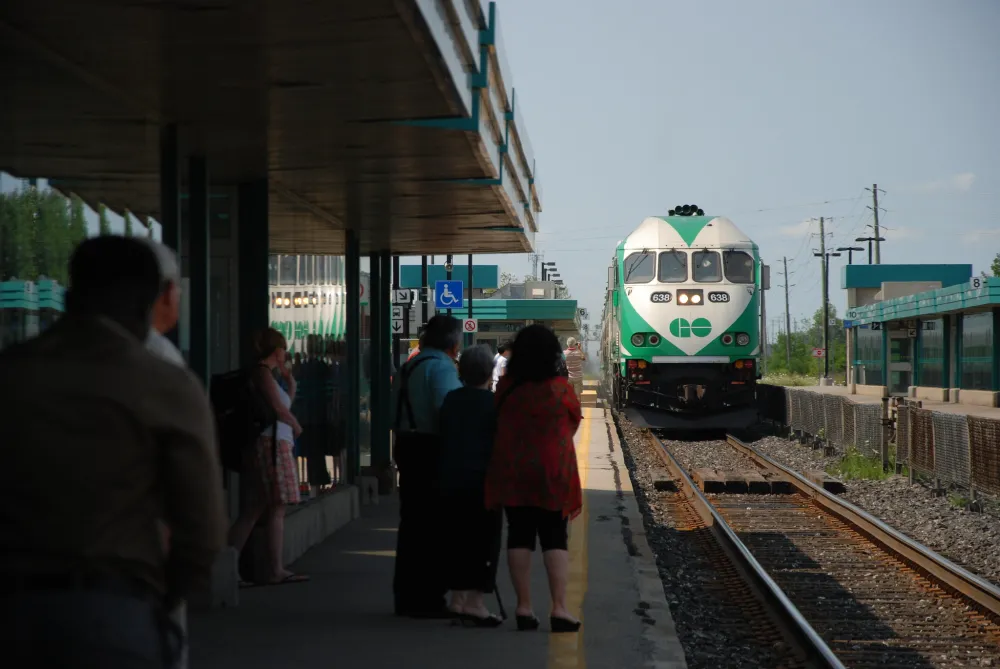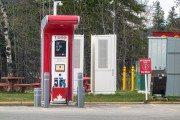Many transit stations in the Greater Golden Horseshoe (including commuter rail such as GO transit) have high investment and redevelopment potential — meaning there’s a lot of potential to transform space around and above stations to accommodate significant population growth in the region and to meet the accompanying housing and employment demands and needs. In light of this potential, in fall 2018 the Government of Ontario and Metrolinx, the province’s transit agency, announced a new market-driven approach to transit-supportive development. This approach will include partnerships with the private sector to redevelop GO stations with housing and employment uses and improved transit stations with amenities like pedestrian tunnels and refurbished platforms. Future projects include a new Mimico GO station in Etobicoke and a new GO station at Woodbine.
Given the potential complexity and scale of redevelopment, public-private partnerships can be a good way to share costs and create these vibrant communities. Municipalities also play a pivotal role in transit-supportive development implementation due to their responsibility for developing local land use and community plans, establishing zoning bylaws and parking standards, reviewing and approving development applications and managing public infrastructure.
Transit-supportive development, although a technical sounding term, is simply a strategy to build a balanced mix of housing, shopping, jobs, and other services (e.g., restaurants and daycare centres) around transit, to help create vibrant, walkable and transit-friendly communities. It is a powerful strategy to help municipalities meet growth management objectives (as directed in the Ontario Growth Plan for the Greater Golden Horseshoe) and spur economic development in urban centres by leveraging existing and planned investments in public transit. By creating places to live, work and play in close proximity to public transit infrastructure, cities can increase their transit use, walking and cycling, and reduce traffic congestion. And as we’ve written about in our Way to GO report, transit-supportive development can help cities potentially increase their housing supply and choice and help individuals and families save on their housing and transportation costs.
While the concept of transit-supportive development is becoming more known and supported — as evidenced by recent Government of Ontario and municipal initiatives — there are implementation challenges. So, how do we get there? It’s up to planners and policymakers to identify transit stations with the greatest need and/or the biggest potential for transit-supportive development. Further, planning for and making investment decisions to encourage transit-supportive development must consider a range of interrelated factors, such as land use, transportation, transit service, public realm elements like green spaces and walkways, public infrastructure, economic development and real estate market dynamics.
To help identify solutions and set a framework to support successful transit-supportive development, the Pembina Institute and Evergreen co-found and co-chaired a Transit-Supportive Development Working Group between 2017-2018, under Evergreen’s Housing Action Lab. The findings and discussions of this group, in addition to other research, led to the creation of our latest report with Evergreen: How to create vibrant transit supportive communities: a typology & evaluation tool. This framework aims to help planning authorities and other relevant actors better assess the potential for transit-supportive development and identify what it takes to accelerate transit-supportive development.
5 principles of transit-supportive development
To start, what we’ve heard in the working group is that five key principles are needed in order to support transit-supportive development:
- Forward-thinking land use and transportation planning
- Buy-in from key planning and policy decision-makers
- A balance of competing local priorities
- Dedicated resources at the municipal level to undertake planning work
- Coordination and partnership across sectors
Without these elements, development plans or projects in and around transit infrastructure are at risk of becoming one-off propositions that do not result in benefits or value to the surrounding community.
A typology and evaluation framework
Given the opportunities and challenges in prioritizing development around transit, investment strategies to redevelop transit stations need to be context-sensitive. One way to take context into account is to create a typology for transit station areas based on three characteristics: market potential, area conditions, and transit function and service.
While there are many ways in which transit stations can be classified, this report can serve as a tool to inform planning and economic development decisions that facilitate development projects around public transit, and maximize public benefit of existing and planned investments in public transit.
It’s time to turn ideas into action
Building vibrant and active communities around transit stations requires active involvement and partnerships. In order to take full advantage of the benefits and value of creating complete, walkable and transit-friendly communities, there is a need for actions from all levels of government and from the private and non-governmental sectors. To get the necessary elements in place, it will require a willingness and ability to tap into the right resources and capacity. It requires outcomes-driven public policies, resources to build municipal capacity, planning and coordination at all levels of government, and multi-sectoral partnerships. Our new report and typology tool is a great step in addressing this complexity and provide helpful frameworks for policymakers and planners.







